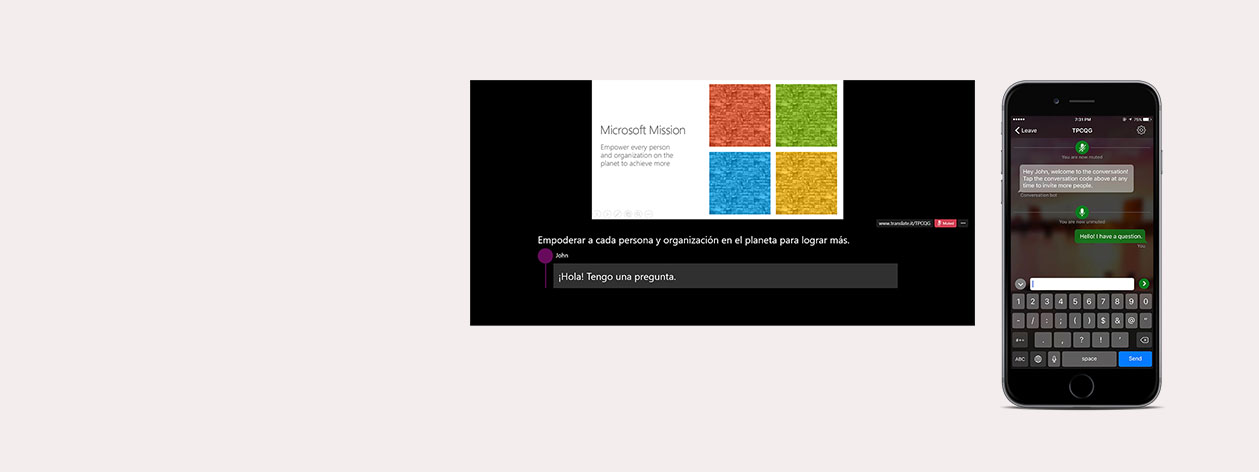
Presentation Translator for PowerPoint
Presentation Translator subtitles your live presentation straight from PowerPoint, and lets your audience join from their own devices using the Translator app or browser.
As you speak, Presentation Translator displays subtitles directly on your PowerPoint presentation in any one of more than 60 supported text languages. This feature can also be used for audiences who are deaf or hard of hearing.
Up to 100 audience members in the room can follow along with the presentation in their own language by downloading the Translator app or joining directly from their browser.
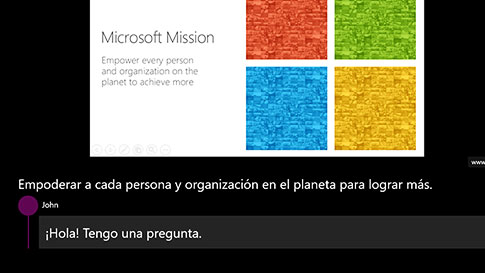
Live subtitling
Speak in any of the 11 supported speech languages and subtitle into any one of the 60+ text translation languages.
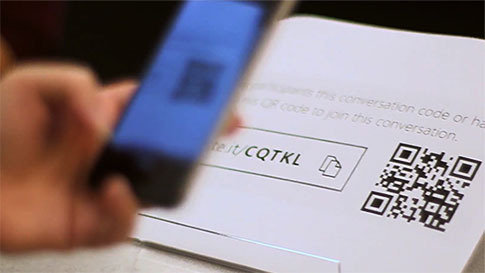
Interactive audience experience
Share a QR- or five letter conversation code and your audience can follow along with your presentation, on their own device, in their chosen language.
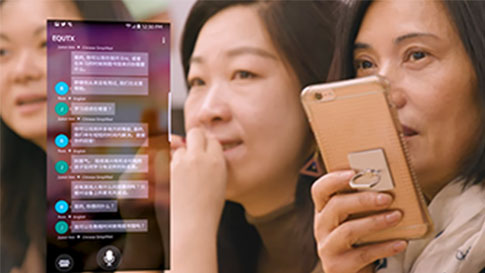
Multi-language Q&A
Unmute the audience to allow questions from the audience on their device in any of the supported languages.

Inclusivity through Accessibility
Help audience members who are deaf or hard of hearing follow the presentation, and participate in the discussion.

Customized speech recognition
Customize the speech recognition engine using the vocabulary within your slides and slide notes to adapt to jargon, technical terms, and product or place names. Customization is currently available for English, Chinese, and Spanish.
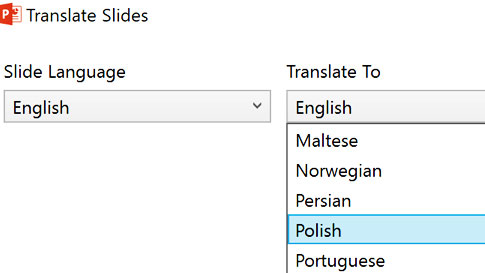
Translated presentations with preserved formatting
The "Translate Slides" button allows presenters to translate their whole presentation while preserving its formatting.
The technologies behind Presentation Translator
Presentation Translator for PowerPoint is powered by the Microsoft Translator live feature which lets you have translated chats by starting or joining a conversation from the Translator app. Up to 100 people can chat at once using the Translator app or directly from their browser at http://translate.it.
The Microsoft Translator live feature is built using Microsoft Translator core speech translation technology, the Microsoft Translator API, an Azure Cognitive Service.
Presentation Translator integrates the speech recognition customization capabilities of Custom Speech Service (CSS) from Azure’s Cognitive Services to adapt speech recognition to the vocabulary used in the presentation.
How to set-up Presentation Translator for PowerPoint
Learn how to download the add-in, install it, and share the QR and conversation code directly from the presentation so your audience can follow along in their language.
DOWNLOAD PRESENTATION TRANSLATORPresentation Translator in Action
For this demo, English is the chosen speech and captioned language - highlighting the use of live captioning for the deaf or hard of hearing community. Users could also join and participate in other languages. The talks were titled "Access and Understanding in the Classroom: How Deaf Children Learn (or not)", given at Microsoft Research on May 9th, 2017.
What does custom speech recognition do?
- Improves the accuracy of your subtitles by learning from the content in your slides and slide notes. In some cases, you will see up to 30% improvement in accuracy.
- Customizes speech recognition for industry-specific vocabulary, technical terms, acronyms, and product or place names. Customization will reduce these errors in your subtitles, as long as the words are present in your slide or slide notes.
How to set up custom speech in your presentation
- The first time you customize speech recognition for your presentation, it can take up to 5 minutes for Presentation Translator to finish learning.
- After the first time, the subtitles will start instantaneously unless you update the content of your slides.
- Tip: start the custom speech recognition during a practice run so that you don’t experience delays when you present to your audience.
How does the custom speech recognition feature work?
The custom speech recognition feature works by training unique language models with the content of your slides. The language models behind Microsoft’s speech recognition engine have been optimized for common usage scenarios.
The language model is a probability distribution over sequences of words and helps the system decide among sequences of words that sound similar, based on the likelihood of the word sequences themselves. For example, “recognize speech” and “wreck a nice beach” sound alike but the first sentence is far more likely to occur, and therefore will be assigned a higher score by the language model.
If your presentation uses particular vocabulary items, such as product names or jargon that rarely occur in typical speech, it is likely that you can obtain improved performance by customizing the language model.
For example, if your presentation is about automotive, it might contain terms like “powertrain” or “catalytic converter” or “limited slip differential.” Customizing the language model will enable the system to learn this.
When you use the Customize speech recognition feature in Presentation Translator, your presentation content – including notes from the slides – is securely transmitted to the Microsoft Translator transcription service to create an adapted language model based on this data. Data used for customization is not de-identified and is retained in full, along with the adapted model, by the service for thirty (30) days from last use to support your future presentations and use of the language modeling.
Tips for using Presentation Translator
Audio/visual set-up
Before you get started, you’ll need:
- A working microphone: We suggest using a Bluetooth headset so you can move around without restrictions. Check out our list of recommended headsets
- PowerPoint for Windows: PC only. Make sure you do not have any Office applications open while Presentation Translator installs. Once installed, the add-in will update automatically each time a new version is published.
- Permissions: If you are an educator and use a school login for PowerPoint, you may need to contact your administrator to install the add-in on your device(s).
- Internet connection: A hard-wired connection is ideal, but a reliable WiFi connection works well also.If you’re using the add-in for an event, the lecturer should use a wired connection if possible, or dedicated WiFi. Although it will work on WiFi or 4G, if either is weak, or there’s a lot of competition for bandwidth, it can adversely affect performance. Audience participants can use WiFi or 4G as they are only receiving transcriptions or translations and their data requirements are much lower.
How to set up customized content
Depending on what you’re presenting you will probably want to customize how Presentation Translator “understands” your content.
Here are a few tips to set-up CSS:
- Include all relevant content: Don’t forget your presenter notes! Before CSS “learns” your content, the content needs to be present within the slides or slide notes. Full sentences will be used for word contexts, so a full script of your presentation within the slide notes will be useful.
- After you click “Start Subtitling”, a dialogue box will appear to set-up your presentation. Make sure to check the box that says “Personalize speech recognition” so it can customize your presentation speech model*. This will take 3 to 5 minutes depending on the length of your presentation.
- Train in advance. Content, notes, and audio logs will be retained by the service for thirty (30) days from last use to support future presentations. You only need to train the system again if you have updated content or it’s past 30 days since the last training.
* Currently only English and Chinese are supported.
Microsoft Translator live feature
Now that your audio, visual, and presentation content are ready to go, you can now start presenting! This is where audience participation can play a role – to expand the audience that understands your content, or invite them to comment in real-time in their own language.
Here are a few tips to set-up the Microsoft Translator live feature:
- After you click “Start Subtitling”, a dialogue box will appear to set-up your presentation. Under “Additional Settings”, make sure to check the box that says “Add instructional slide”. This will explain to the audience how they can view subtitles on their own devices.
- The add-in will then insert the instructional slide before the start of your presentation. These instructions will allow your audience to easily join the conversation (up to 100 people) on their device, in their language.
- You can choose to “unmute” the audience – allow comments directly from their device – or “mute” the audience so your presentation is uninterrupted. You can simply click “Audience Unmuted” towards the end of the presentation for an interactive Q&A session.

Presentation Translator Help & FAQs
Get your questions answered by searching our Help and FAQ section.
PRESENTATION TRANSLATOR FAQs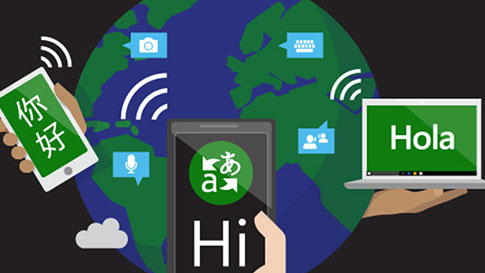
Translator languages
Want to know what features are supported for your chosen language? Visit our languages page.
TRANSLATOR LANGUAGES
Translator for business
Learn more about how Microsoft Translator’s text and speech translation technology can globalize your business and connect with your customers worldwide.
TRANSLATOR FOR BUSINESS SITE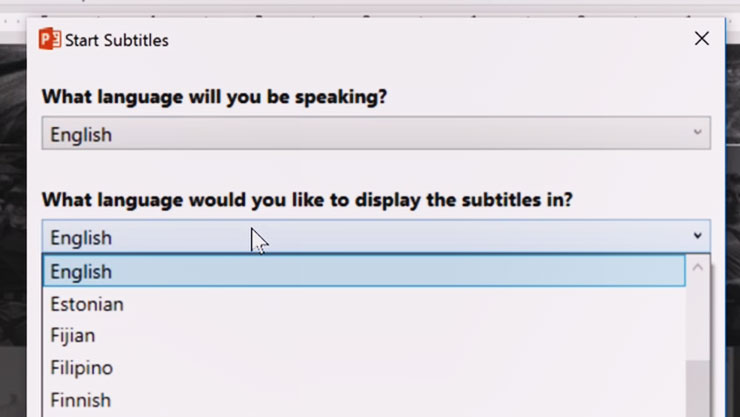
Presentation Translator for PowerPoint
Download the add-in (Windows only).
DOWNLOAD THE ADD-IN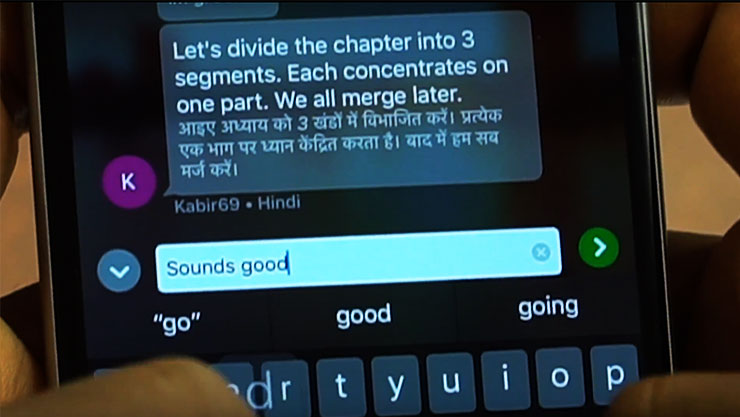
Translator app
Students can follow along with Presentation Translator in their own language and language learners can have one-on-one translated conversations with teachers using the app.
LEARN MORE ABOUT APP FEATURES



